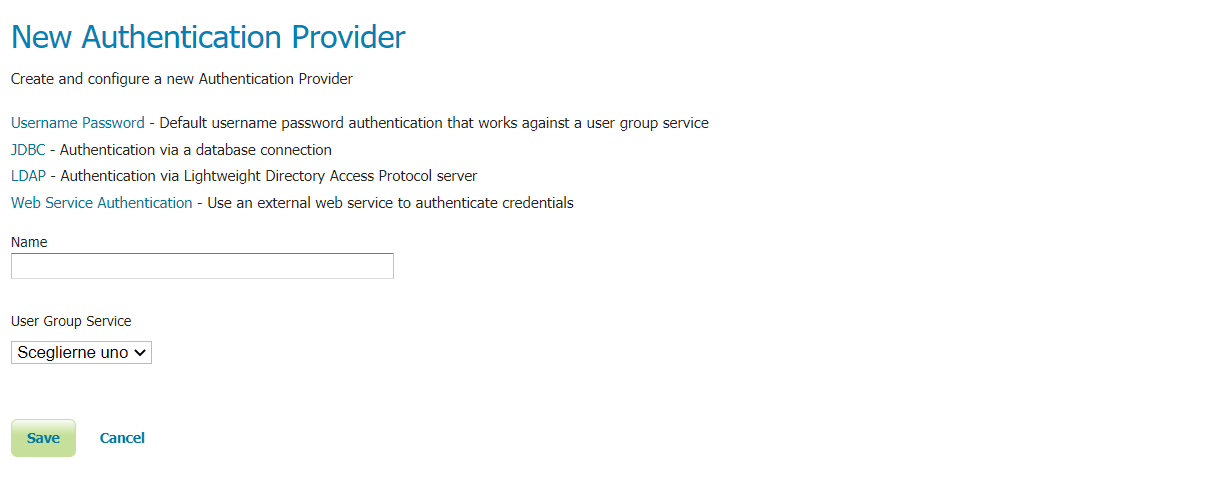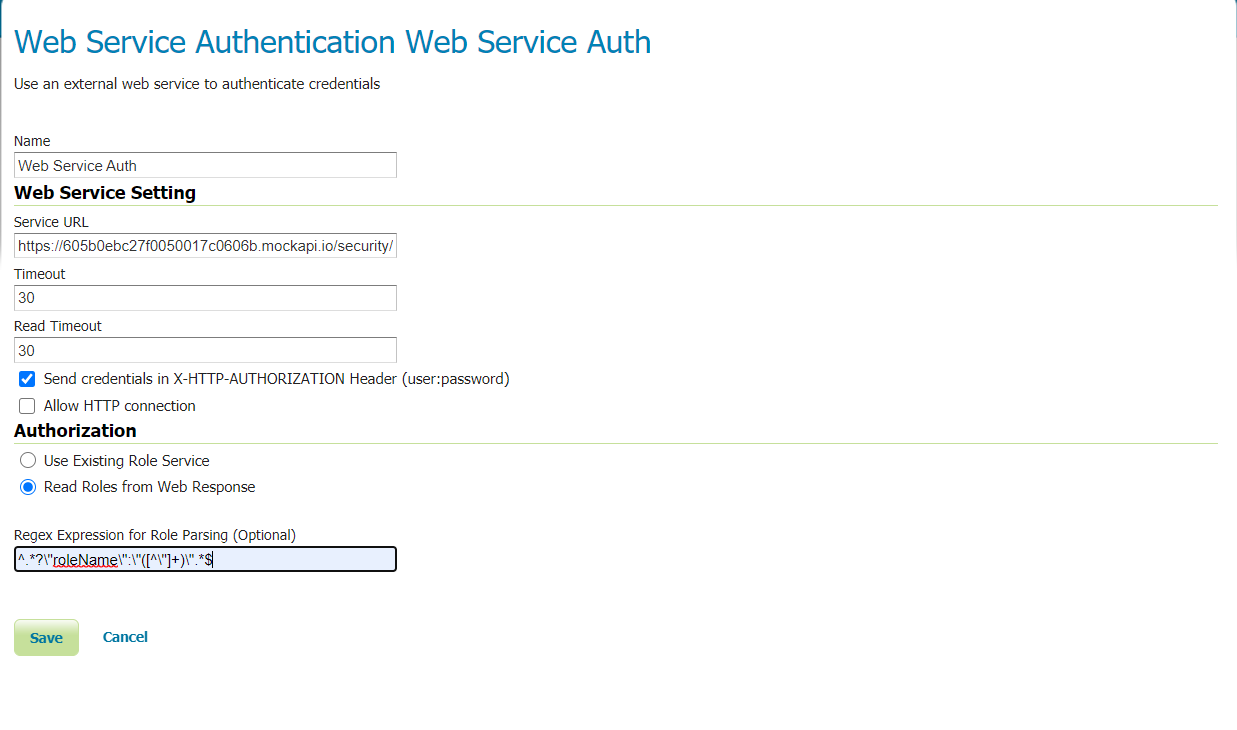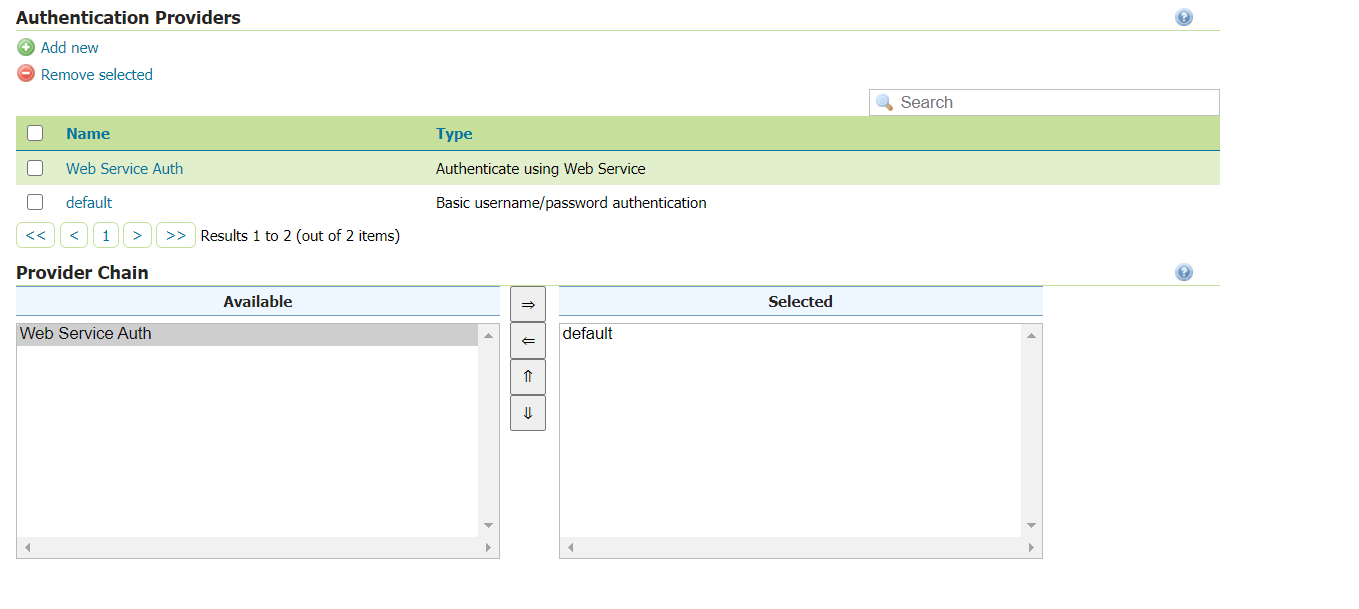HTTP Based Authorization configuration¶
The HTTP Based Authorization plug-in will try to authenticate the user on an configured external authentication service.
The username and the password will be sent to the service in one of the following ways:
In a Header named
X-HTTP-AUTHORIZATION.As a query parameters or as request path. For this use case the url needs to be configured by inseritng two placeholder, namely
{user}and{password}, where the username and password are expected to be provided eg.https://my-auth-service?username={username}&password={password}.
The Authentication Provider will perform a GET request, sending credential Base64 encoded. If the response status returned by the external service is different from 200 the user will not be authenticated.
In case the external authentication service is returning the authenticated user’s roles in the response body, it is possible to define a regular expression to extract them, allowing for their usage for authorization. There is no limitation to a specific content type.
Once the plug-in is installed, it can be configured by:
Opening the Authentication option in the Security menu
Choosing Authentication provider and then add new.
Choose the
Web Service Authenticationoption

Clicking on Web Service Authentication offers the possibility to enter the provider settings.

Where:
Service URLis the URL of the external service meant to be used for authentication.Timeoutis the connection timeout.Read Timeoutis the timeout on waiting to read response data.The
Send credentials in X-HTTP-AUTHORIZATION Headercheckbox is meant to be flagged if credentials have to be sent through the authorization header. If unchecked (default) GeoServer expects to find placeholders for username and password as{user}and{password}in the provided URL instead.The
Allow HTTP connectioncheckbox if flagged will allow authentication request to be performed toward an external service that usesHTTPprotocol. By default onlyHTTPSis allowed.In the
Authorizationsection the radio button allows to define whether to use a GeoServerRoleServiceto read roles or if roles are meant to be returned by the external authentication service.In case
Read Roles from Web Responseis chosen, a regular expression to extract the roles from the authentication service response needs to be provided.
Once the settings are saved the new AuthenticationProvider is added to the list and needs to be added into the list of the providers’ chain
